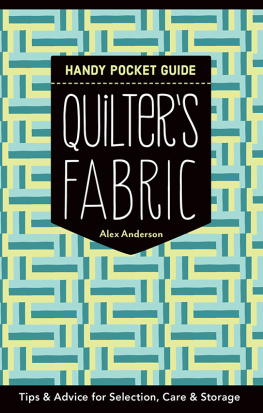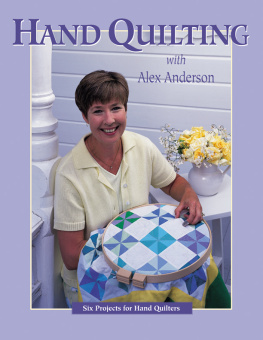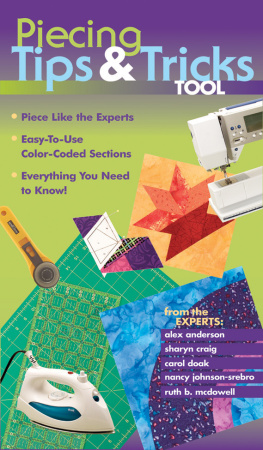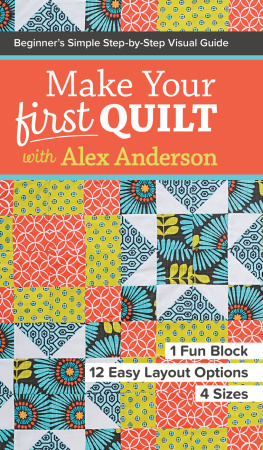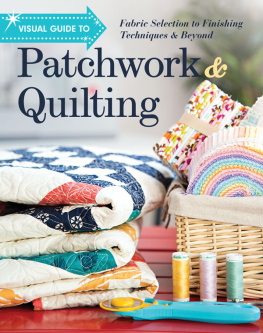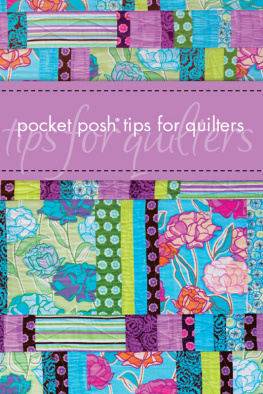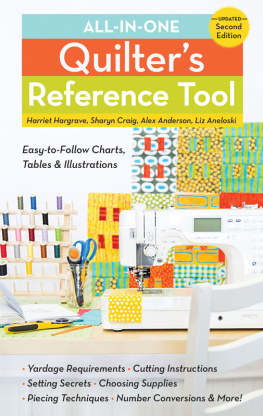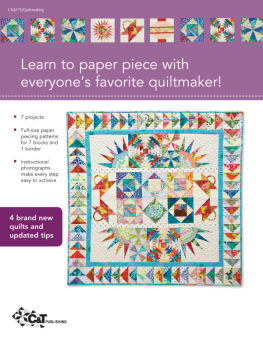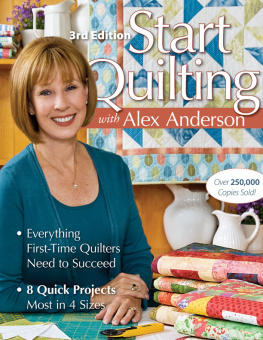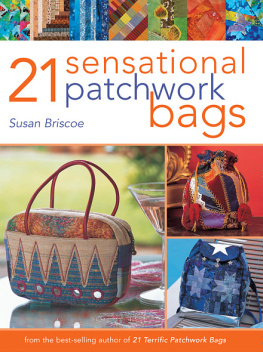Publisher: Amy Marson
Creative Director: Gailen Runge
Project Editor: Alice Mace Nakanishi
Developmental Editor: Liz Aneloski
Technical Editor: Nan Powell
Cover/Book Designer: Kerry Graham
Production Coordinator: Zinnia Heinzmann
Photographers: Diane Pedersen, Nissa Brehmer, Christina
Carty-Francis, Luke Mulks, Sharon Risedorph, John Bagley,
and Richard Tauber, unless otherwise noted
Published by C&T Publishing, Inc., P.O. Box 1456, Lafayette, CA 94549

FABRIC AND COLOR:
CHOOSE IT AND USE IT!
A huge common element that binds quilters together is our passion for fabric.
No surprise here: Fabric is our lifeline to creativity.

FABRIC GRAIN
Selvages When fabric is produced, the threads are woven in two directions, creating a lengthwise and crosswise grain. The long, finished edges of the fabric are called the selvages.
Straight of grain The lengthwise and crosswise grain is called the straight of grain. The lengthwise grain runs parallel to the selvages and has little, if any stretch. The crosswise grain, which runs across the fabric from selvage to selvage, has a little stretch.
Bias The bias, which runs diagonally across the fabric in any direction, has lots of stretch. Because of this, handle any bias edgeswhether cutting them, sewing them, or pressing themvery carefully to avoid distortion.


New fabrics continue to appear in the marketplace, and we quilters do love the new stuff! Colors and styles come and go, and its always a good idea to take advantage of the opportunities when we see them. An infusion of even a few trendy colors and prints can add freshness to your quilt.
Im always on the lookout for fabrics to expand and enrich my stash, and when I find something I like or that I know will fill a gap in my collection, I buy at least yard. If I find a print that has the potential to become the foundation for a quiltfor example, a promising focus fabricI guesstimate enough for a border and then add an additional yard, just in case. (If nothing else, I know I can use the yardage for backing.)
When determining your own shopping guidelines, budget and storage space will, of course, come into play, as will the size quilts you usually make. A quilter who leans toward king- or queen-size projects will probably buy more fabriceither in variety or quantitythan one who rarely makes anything larger than a wall quilt.
A FEW WORDS ABOUT QUALITY

For the most part, I recommend that you work with the best 100% cotton fabric available from your local quilt shop. Fabric of lesser qualityfor example, with a looser weave, with a lower thread count, or the result of improper processingmight ravel, stretch, or distort, making accurate piecing and smooth appliqu difficult, if not impossible. A great deal of work goes into making a quilt, and your time is worth the best materials available. I would rather have five pieces of quality fabric than twenty pieces of lesser quality.

You may also want to play with many nontraditional fabrics. Todays quilters love voile and wool and silk ... and more! I recommend that you work with quality fabrics in these alternatives as well. (See Nontraditional Fabrics, for specifics about these fabrics.)
THREE KEYS TO SUCCESSFUL FABRIC SELECTION

Whether youre gathering fabrics for your very first quilt or youre a long-time quilter working on building a healthy fabric collection, the same basic principles apply. Aim for a good mix of color, value, and character of print.
COLOR
When we speak of a color, were speaking of that colors entire familyand color families can be quite large. They include all the lights and darks, tints and shades of that particular family.
Meet the Red family!

Dont be afraid to open yourself to all the colors available to you, not just the ones that you love and that youve always been drawn to. As you continue to grow your fabric stash, keep an eye out for the colors that are missing from your collection and make a note to hunt them down next time you head to your favorite fabric source. Your future quilts will love you for it!
If you look at old quilts, youll often find colors, or combinations of colors, that would never cross your mind as candidates for your next quilting project. Our foremothers (and, occasionally, forefathers) were fearless; they worked with rich red, electric blue, bile green, bubblegum pink, citrus yellow, cheddar orangesometimes all in the same quiltand were still admiring these quilts more than 125 years later.
Fabrics in colors reminiscent of vintage quilts from the late 1800s


When Im stumped for a color scheme, feel my palette would benefit from the addition of another color (or colors), or wonder if the colors Im considering will play well together, I look to the color wheel. Its a great guide for determining successful color relationships, especially when youre expanding your horizons to work with colors you might not have worked with before.

Here are a few basic color schemes that you can draw from the color wheel.
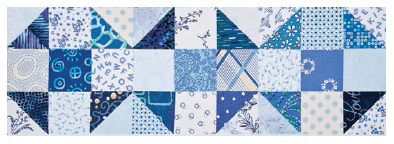
Monochromatic This color scheme showcases a single color family in all its gloryfor example, a blue color scheme can include blues from the palest baby blue to deep, rich navy.

Complementary This color scheme is built around two color families that appear opposite each other on the color wheel, such as red and green.
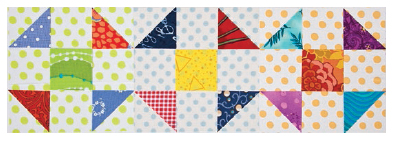
Triadic This color scheme is built around three color families that are equally distant from each other on the wheel, such as yellow-orange, red-violet, and blue-green. To find a triadic color scheme, start with a single color on the wheel, andmoving clockwiseskip three colors, select the next, skip three more, and select the next color. Skip another three colors and youre back to your starting point, creating a perfect triadic color scheme.
Next page
